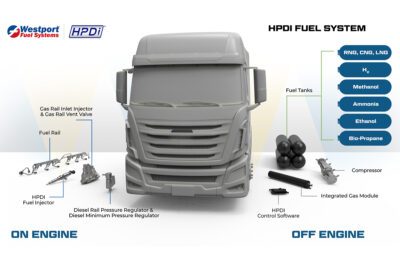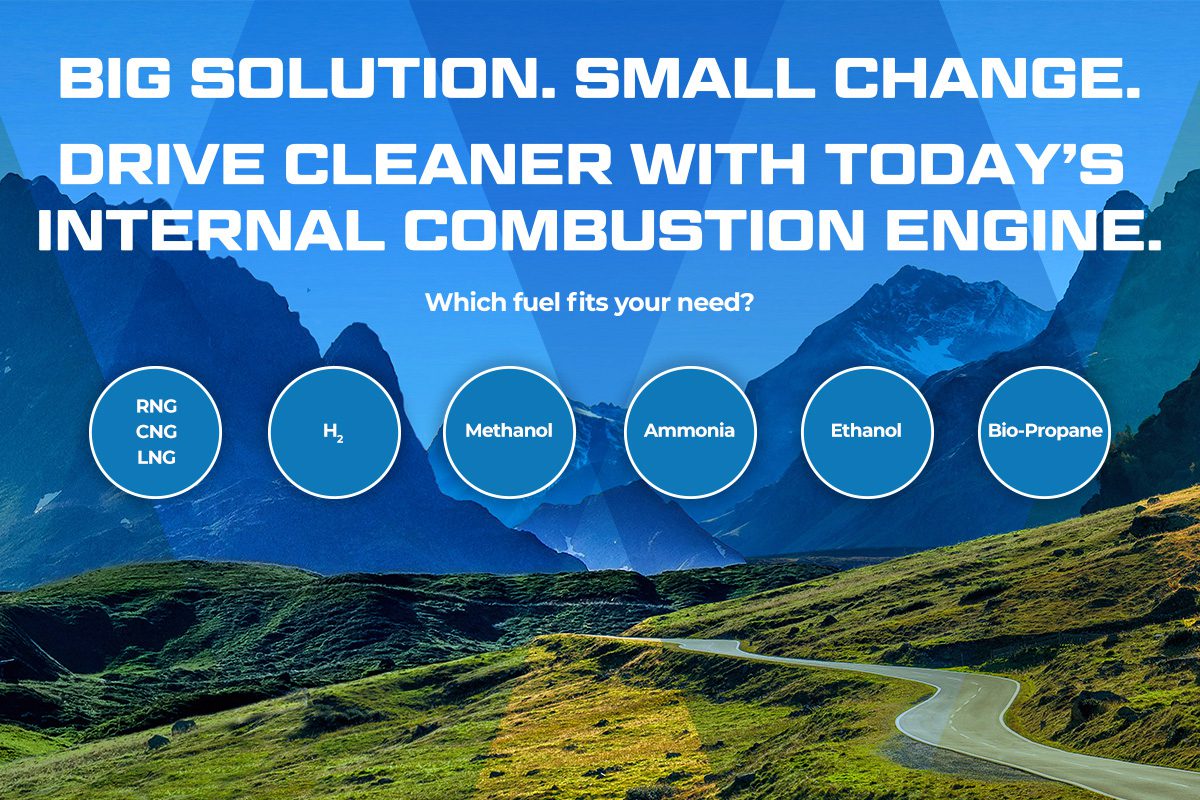Commercial transportation continues to make huge strides on the journey to zero emissions. Part of this progress is a growing recognition that there are many possible paths to reaching the important goal of significantly reducing or eliminating emissions. This leaves us at a critical juncture, with OEMs, fleets, and the industry at large seeking a solution that is viable, available, affordable, and appropriate for the application’s intended use. Interestingly, it’s one that may already be quite familiar.
That renowned solution? The internal combustion engine (ICE). While some applications are already running ICE technologies with alternative fuels, overall, the industry is just beginning to understand that the tried-and-true internal combustion engine can continue to play a critical role in clean commercial vehicle propulsion by running on low- to zero-carbon fuels.
Something Other than Diesel? Tell Us More
In commercial transportation, the internal combustion engine and diesel have been synonymous with one another. However, ICE technologies engineered with an integrated fuel system solution can operate on multiple alternative fuels. This allows OEMs to maintain existing diesel engine architectures and related manufacturing infrastructure while offering timely, efficient, and cost-effective solutions to reducing vehicle emissions. Consider the following overview on primary energy sources and their use with internal combustion engines:
- Renewable Natural Gas is a biofuel that is already in use with several commercial ICE applications. Compressed natural gas (CNG) and liquefied natural gas (LNG) are the two common forms of natural gas used in vehicles. Natural gas is known for its lower carbon content and reduced emissions of pollutants compared to conventional gasoline and diesel. It also offers potential cost savings, as natural gas prices are often more stable than oil prices.
- Hydrogen, the most abundant element on the planet, is produced from water through the process of electrolysis. It is carbon-free, producing only water vapor. An ICE burns hydrogen in much the same way it burns diesel.
- e-Fuels, or synthetic fuels, are produced by converting renewable energy sources into liquid or gaseous fuels. These fuels, such as synthetic gasoline or synthetic diesel, can be used directly in existing ICEs without major modifications. They offer the potential for carbon neutrality, as the carbon dioxide emitted during combustion is recaptured during the production process.
- Methanol has similar properties to ethanol and is generally produced by steam-reforming natural gas to create a synthesis gas. Its benefits include a relative low cost to produce, and that it can be manufactured from a variety of domestic carbon-based feedstocks, such as biomass, natural gas, and coal.
- Ammonia is produced from the conversion of methane into pure carbon and hydrogen and reacted with nitrogen to produce a CO2-free fuel. It is being touted as having three times the energy density of compressed hydrogen and is liquid at ambient temperature, which makes it much easier to store and transport.
- Biofuels are derived from renewable biomass sources such as plants, agricultural residues, animal fats, and algae. For ICE applications, in addition to RNG, these include:
- Ethanol is an alcohol-based biofuel primarily produced from corn, sugarcane, or cellulosic materials. It burns more cleanly and completely than diesel and significant GHG reduction can be achieved, depending on the feedstock.
- Bio-propane is produced from renewable feedstocks such as plant and vegetable waste material and is an ideal energy solution as it reduces CO2 emissions by up to 80%.
Keep Calm and Spec an Alternative Fuel ICE
There are many similarities between the internal combustion engine running diesel and an alternative-fuel ICE, creating a sense of comfort for OEMs and fleets alike. Why?
- Internal combustion engines with alternative fuels utilize existing vehicle architectures
- An internal combustion engine burns alternative fuels in much the same way it burns diesel, minimizing the learning curve
- The range and refueling times are similar,* allowing fleets to maintain existing practices
- Known technology provides familiarity with operation, troubleshooting, maintenance, servicing, and drivability
- Diesel and alt-fuel engines share similar componentry, creating economies of scale
- Existing and established ICE supply chain can be utilized to maximize overall efficiencies
*As defined by the profile of the alternative fuel
By leveraging existing technologies, manufacturing infrastructure and supply chains, the enduring, reliable internal combustion engine can live on and thrive with new fuel and renewed purpose.
Drive Cleaner with Today’s Internal Combustion Engine
Westport’s Commercially Available HPDI™ gives new life to the ICE
Alternative fuels used in internal combustion engines are necessary to achieve a zero-emissions transition in the next two decades when most of the impending regulations will be fully enforced. Westport’s HPDI, or High Pressure Direct Injection, provides complete injector “tip-to-tank” OEM solutions, allowing the same internal combustion engines that are in fleets now the ability to shift the system to run on alternative fuels. The HPDI/ICE system is the most fuel-flexible solution in terms of which low carbon fuels it can run on, including renewable natural gas, hydrogen, e-Fuels and biofuels, all while delivering peak performance and maintaining or exceeding power, efficiency, and torque.
 HPDI offers a cost-effective solution that delivers substantial CO2 reductions while allowing OEMs to preserve their existing engine architecture, leverage existing engineering talent and experience, installed investments, and decades of technology development in vehicle powertrain design, supply chain, and manufacturing.
HPDI offers a cost-effective solution that delivers substantial CO2 reductions while allowing OEMs to preserve their existing engine architecture, leverage existing engineering talent and experience, installed investments, and decades of technology development in vehicle powertrain design, supply chain, and manufacturing.
The rapid scaling of production means HPDI can quickly be deployed, further stimulating the demand for alternative fuels and accelerating the reduction of cumulative GHG emissions.
There are many considerations, including safety protocols, when exploring alternative fuel systems. Westport Fuel Systems is a leading supplier of advanced fuel delivery components and systems for clean, low-carbon fuels such as renewable natural gas, hydrogen, e-Fuels, and biofuels, to the global transportation industry. To learn more about our market-ready HPDI system, visit www.wfsinc.com.



